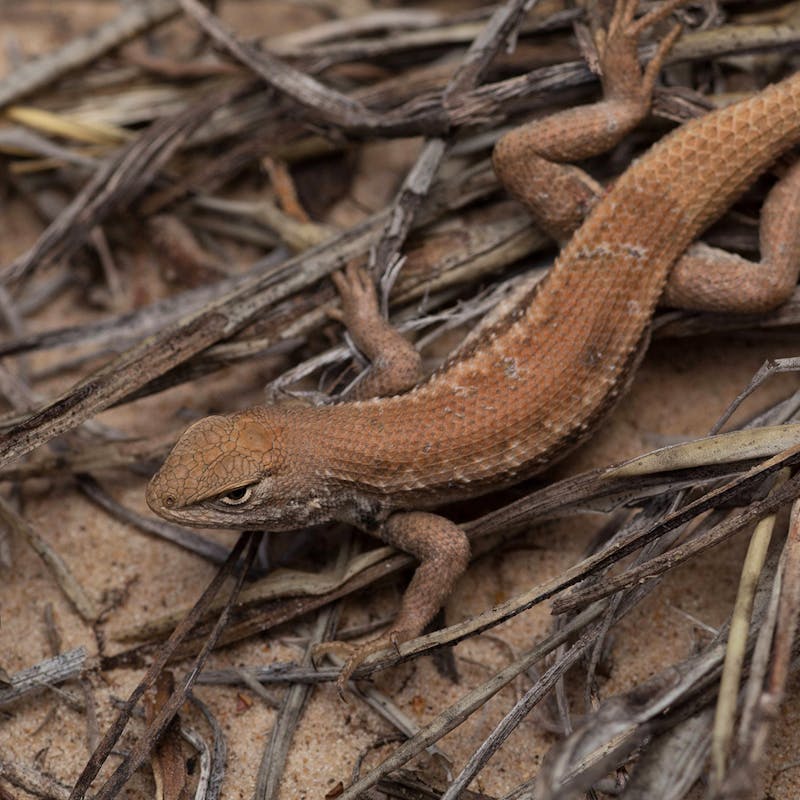If you have ever paid a visit to northwest Florida, you have set foot in the state’s sentinel landscape. The 11,306 square mile geography of the Northwest Florida Sentinel Landscape includes Pensacola, Panama City, Tallahassee, as well as a national forest, refuge, and seashore. Visiting here, you can explore pine forests, marshes and beaches, and see endangered species — Gulf sturgeon, red-cockaded woodpecker, even loggerhead and green sea turtles, just to name a few.
Something less common coexists with all of that wildlife: A hearty, critical presence by the U.S. Navy and Air Force. Military presence is not often thought of alongside conservation or endangered species. In northwest Florida, though, the military is an important conservation ally.
In 2022 the Departments of Defense, Agriculture and Interior designated northwest Florida as one of 18 sentinel landscapes across the United States, in a partnership coordinated by Defenders of Wildlife. Sentinel landscape designation enhances access to federal, state, local and private conservation funding for projects managed by four dozen partner organizations, ranging from local to federal in scale and scope. Defenders develops and contributes to project proposals, finding funding sources for habitat conservation and protecting military missions in the face of threats from human development and climate change.
Northwest Florida has hosted military bases across its 16 sprawling counties since Spanish colonization. Today, six of our country’s most important military installations and ranges call the region home, including Eglin and Tyndall Air Force Bases; Pensacola and Whiting Field Naval Air Stations; Hurlburt Field, and Naval Support Activity Panama City.
Weathering the Storm
To understand why military bases must be a part of conservation considerations in Northwestern Florida, look skyward — five of the six bases conduct aerial missions, covering nearly all of Florida’s panhandle. These missions include training and weapon systems testing, which require undeveloped terrain and access to land, as well as Gulf of Mexico military ranges. In this way, both conservation priorities and military missions necessitate preserving northwest Florida landscapes.
As population and tourism increase in the region, severe weather and coastal erosion events are also on the rise and expected to worsen in coming decades, bolstered by human-caused climate change. In 2018, Hurricane Michael — likely intensified by climate change — destroyed Tyndall Air Force Base, preventing it from carrying out critical training for more than five years. Against that backdrop of destruction, 2.8 million acres of Florida timber lands were destroyed or affected by Hurricane Michael in the Apalachicola River valley — the heart of the Northwest Florida Sentinel Landscape. Eighty percent of those lands are owned by private landowners, leaving much uncertainty as to whether they will be replanted or converted to uses that are less friendly to wildlife and less compatible with the missions of the Air Force and Navy.
Development near the safety buffer zones extending beyond military installations can negatively impact the use of these airfields and destroy the habitat of threatened and endangered species. Development also makes it harder to use prescribed fire to manage and restore native longleaf pine forests, in order to maintain groundcover habitat for species like the endangered reticulated flatwoods salamander and the gopher tortoise, whose burrows provide shelter to over 350 other species, including the threatened Eastern indigo snake.
The partners across this sentinel landscape support habitat protection for endangered species, while also protecting military installations through wetland restoration, invasive plant control, and establishing oyster reefs, sea grass beds and living shorelines. Both Tyndall and Eglin Air Force bases and Naval Air Station Pensacola, for example, are working to slow shoreline erosion from rising sea level and storm damage.
Having this partnership with the U.S. military and other allies in the region creates opportunities for the military to be good neighbors to local communities, while reducing potential constraints on how the military’s bases and ranges are utilized.
The partnership between Defenders and the U.S. military inside the northwest Florida Sentinel Landscape is intricate, allowing the military to coexist with wildlife, as well as recover species populations that may have previously suffered at the hands of human development and land management. In 2023, for example, the Okaloosa darter population was declared no longer endangered by the U.S. Fish and Wildlife Service after 30 years of streamside habitat restoration at Eglin Air Force Base! The northwest Florida Sentinel Landscape Partnership’s collaborative projects help ensure that Florida’s natural and human communities are sustainable and resilient as the human population grows and the climate changes.












